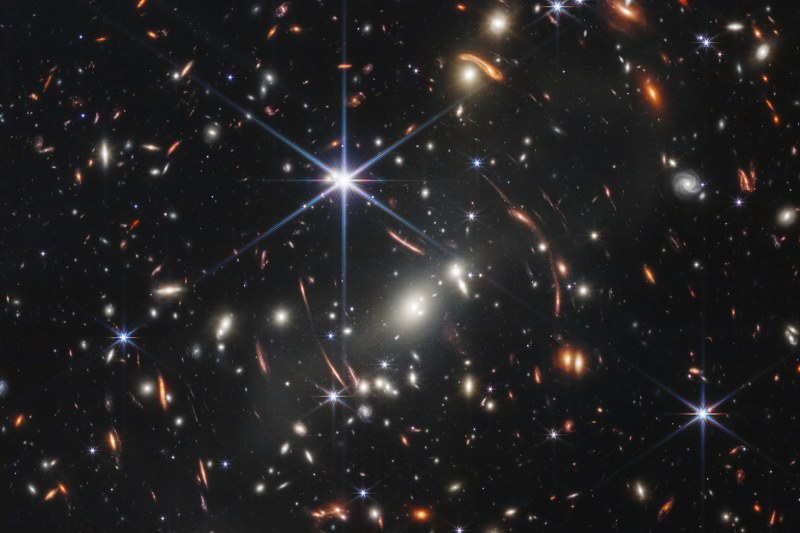Long Ago in a Nearby Galaxy: Research Finds Hints to the Environment of the Early Universe

An astronomer at Rutgers University in New Brunswick is leading a research team that is using enormous data sets gathered by NASA’s James Webb Space Telescope to uncover hints about circumstances that existed in the early cosmos.
The researchers claim to have created the most comprehensive image of the Wolf–Lundmark–Melotte (WLM) galaxy to date by cataloguing the ages of its stars. Located next to the Milky Way, WLM is a hub of vigorous star formation where stars as old as 13 billion years old were produced.
“In looking so deeply and seeing so clearly, we’ve been able to—effectively—go back in time,” said Kristen McQuinn, an assistant professor in the Department of Physics and Astronomy in the School of Arts and Sciences, who led the research, described in The Astrophysical Journal. “You’re basically going on a kind of archaeological dig, to find the very low mass stars that were formed early in the history of the universe.”
McQuinn attributed the team’s ability to determine the galaxy’s star evolution history to the Amarel high-performance computer cluster, which is overseen by the Rutgers Office of Advanced Research computer. According to McQuinn, one part of the research included performing a single, large calculation 600 times.
She said that the significant computational effort confirmed data processing protocols and telescope calibrations that will be useful to the larger scientific community.
For McQuinn, so-called “low mass” galaxies hold particular interest. They make it possible for scientists to study the evolution of chemical elements, the formation of stars, and the effects of star formation on a galaxy’s gas and structure because they are thought to have dominated the early universe. Faint and dispersed throughout the sky, they make up the vast bulk of local universe galaxies. With the use of cutting-edge telescopes like the Webb, astronomers can now see more clearly.
WLM—an “irregular” galaxy, meaning it doesn’t possess a distinct shape, such as a spiral or ellipse—was discovered by the German astronomer Max Wolf in 1909 and characterized in greater detail in 1926 by Swedish astronomer Knut Lundmark and British astronomer Philibert Jacques Melotte. It is positioned at the outskirts of the Local Group, a dumbbell-shaped group of galaxies that includes the Milky Way.
WLM’s star population is in a perfect condition and is excellent for study since it is shielded from the effects of merging with other galaxies by its location at the periphery of the Local Group, according to McQuinn. Astronomers are also interested in WLM because it is a complex, dynamic system with a large amount of gas that allows it to actively create stars.
“We can use what we know about stellar evolution and what these colors and brightnesses indicate to basically age the galaxy’s stars,” said McQuinn, adding the researchers then counted the stars of different ages and mapped out the birth rate of stars over the history of the universe. “What you end up with is a sense of how old this structure is that you’re looking at.”
This method of star cataloging allowed the researchers to see how WLM’s capacity to produce stars fluctuated over time. The team’s findings demonstrate that the galaxy created stars during a period of 3 billion years early in the history of the universe, and they corroborate previous estimates made by scientists using the Hubble Space Telescope. It halted, then flared up again.
According to McQuinn, circumstances unique to the early cosmos created the hiatus.
“The universe back then was really hot,” she said. “We think the temperature of the universe ended up heating the gas in this galaxy, and kind of turned off star formation for a while. The cool down period lasted a few billion years and then star formation proceeded again.”
As part of NASA’s Early Release Program, selected scientists collaborate with the Space Telescope Science Institute to carry out studies that showcase Webb’s capabilities and aid astronomers in getting ready for upcoming observations.
In December 2021, NASA launched the Webb telescope. The massively mirrored device circles the sun one million kilometers from Earth. Researchers vie for time behind the telescope to investigate a variety of subjects, such as the conditions of the early universe, the solar system’s past, and the hunt for exoplanets.
“There’s a lot of science that’s going to come out of this program that hasn’t been done yet,” McQuinn stated.
Max Newman, a PhD student in the Department of Physics and Astronomy at Rutgers School of Arts and Sciences, and Roger Cohen, a postdoctoral associate, were two other Rutgers researchers involved in the study.